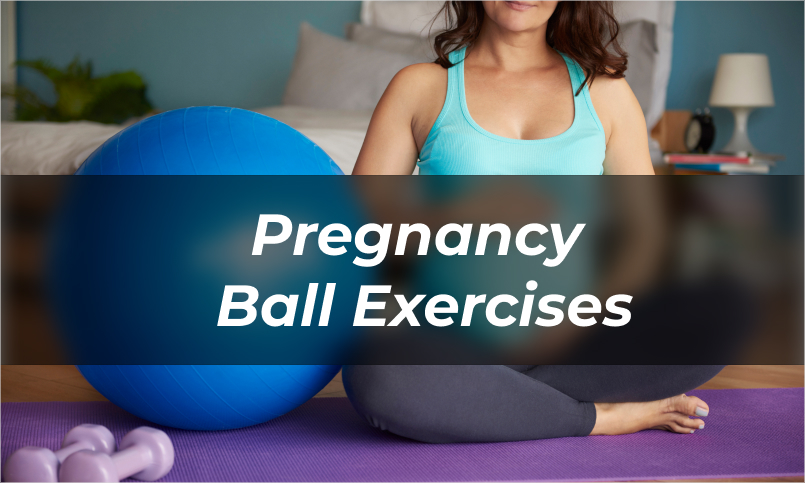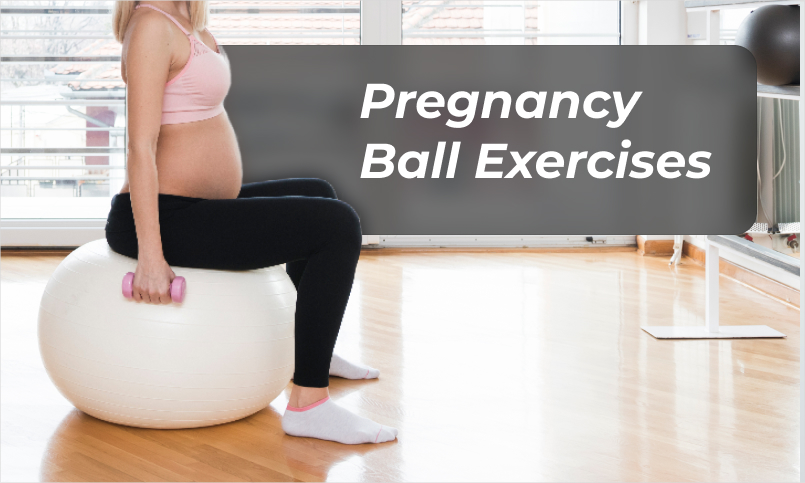Maybe you have an exercise regimen, or you are trying to find one during your pregnancy; pregnancy balls are one of the best places to begin. Pregnancy balls allow you to be active in a way that is comfortable and can simply support your changing body. It also allows you to simply strengthen the muscles, which is required for most of the labor. So, be ready to know the best pregnancy ball exercises for you.
Pregnancy Ball Safe Exercise
You may be wondering which exercises are safe during pregnancy. As per the Centers for Disease Control and Prevention, pregnant women need to get a minimum of 150 minutes of moderate or intense aerobic exercise per week. It may be broken down into 30 minutes of the exercise 5 days a week.
Before starting the new exercise, you have to ensure that you consult with your doctor. For some people, like those who have a high risk of pregnancy, doctors suggest avoiding exercise.
What is a Pregnancy Exercise Ball?
The pregnancy exercise ball is mainly known as the birthing ball or the pregnancy ball. It is one of the inflatable balls which is bigger than the normal exercise ball. Also, the size support for the mother as her body changes. Compared to the other inflatable balls, exercise and pregnancy balls are made of non-slip material, making them safe for you to use without sliding.
Pregnancy balls can also be used during pregnancy, postpartum, and labor. There are mainly 4 major ways in which people use a pregnancy exercise ball.
- Lots of pregnancy exercises on the ball mainly aim to stretch the muscles and also take the pressure off your back.
- Bouncing on a pregnancy ball will simply engage your pelvis and prepare it for labor.
- You can be able to use a pregnancy exercise ball for sitting instead of the chair or sofa. As you use your muscles to stabilize yourself on the ball simply, it is an easy method to strengthen your core. Also, they can get used to postpartum at the time of sitting on the furniture, which may cause discomfort in your vaginal area.
- The pregnancy balls can be used during the workout routine, like wall squats and ab crunches, which will become easier during pregnancy if you use the exercise ball.
Why Use a Pregnancy Exercise Ball?
Pregnancy exercise balls are used for some reasons:
- The weight of your growing baby puts pressure on your back and hips and leads to aches and pains as well. Sitting upon a pregnancy ball helps you to reduce the pressure and provide relief.
- Some of the exercises on a pregnancy ball help you to prepare for labor. The moves which strengthen your pelvic floor and stomach will make your labor easy and less painful.
- A pregnancy ball is also good for getting physical activity during pregnancy. As your body changes, you will find some of the exercises more tough. A pregnancy ball is used as the tool to modify those fitness ball exercises for pregnancy simply and give you the best workout, which is so comfortable.

Best Pregnancy Ball Exercises
Here, we are going to share some of the best birthing ball exercises during pregnancy, which you can do easily.
Seated Marching
Seated marching is one of the easy and simple ball pregnancy exercises to strengthen your ab muscles. As you shouldn’t lay on your back for the crutches, then, in such cases, it is one of the best alternatives for you.
- You have to sit on the ball with your feet on the follow and your knees bent.
- Simply engage your core and sit tall.
- Raise one foot off the floor slowly and lift your knee for the crunch.
- Then, hold the position and lower your foot to the follow.
- Carry on in the same manner with the opposite leg.
Wall Squats with Exercise Ball
Wall squats are the best option for your flutes and for your pelvic floor muscles as well. Follow the steps given below to do this exercise ball pregnancy:
- You need to put the birth ball between your lower back and the wall.
- Then, stand with your feet a little wider than the hip-width apart.
- Now, bend your knees and lower your hips into the squat.
- Simply press your heels down and then stand back up.
Kegels, AKA Pelvic Floor Exercise
Kegels are the best pregnancy ball exercises to strengthen your pelvis and prepare it for labor. Kegels may be tough to do as you can’t be able to see your muscles working.
- First of all, you have to sit on your pregnancy ball and then contract your pelvic follow muscles.
- You have to hold it for a few seconds and then release it.
- In terms of helping you to know which muscle to contract, you have to envision the same one that you use to stop the flow of urine.
- You need to imagine that this muscle helps you perform the exercise.
Final Verdict
A pregnancy ball can be used simply to provide pain relief and also help you stay active during your pregnancy. Pregnancy ball exercises are really good for opening up your hips and strengthening your pelvic floor, abs, and flutes, which helps you prepare for labor. Exercising on the pregnancy ball is safe for most pregnancies, but you need to consult with your doctor before starting exercises.
Also Read – Early Pregnancy Exercises At Home
FAQs
How many weeks of pregnancy can you use a birthing ball?
You can simply start using an exercise ball for pregnancy at any stage of your pregnancy. Still, after 32 weeks of pregnancy, you can use some of the gentle exercises to simply help you with aches and pains and get your baby in the correct position.
When can you start bouncing on the birthing ball?
You can simply sit on the birthing ball from early on in pregnancy. From around 32 weeks, you can simply use it to help you with some of the gentle pregnancy exercise ball, and you have to check out with your GP or midwife before trying them.
How do you sit on a pregnancy ball?
When you sit on a pregnancy ball, you need to plant your feet on the ground about shoulder-width apart. It is really good to be barefoot if you can; otherwise, wear non-slip shoes or the cooks. You can move from side to side and move into a circular or figure of the 8 motion.
Can a birthing ball induce labor?
A pregnancy ball can be used during labor as a method to relieve the pressure, quicken the dilation process, and take on different positions that might be comfortable. Using the pregnancy ball during the postpartum and for most, the discomfort doesn’t end after birth.

